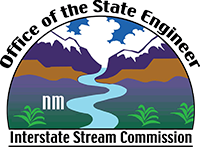Colorado River Compact
Signed in 1922, the Colorado River Compact was ratified by California, Colorado, Nevada, New Mexico, Utah and Wyoming in 1929 and approved by Congress in the Boulder Canyon Project Act of 1929. Although Arizona did not ratify the compact until 1944, the President of the United States proclaimed it effective in 1929.
It apportions the use of waters of the Colorado River system to the upper and lower basins. Parts of Arizona, Colorado, New Mexico, Utah, and Wyoming constitute the upper basin. The lower basin includes parts of Arizona, California, Nevada, New Mexico, and Utah.
The compact does not provide for an administrative commission. Instead it provides that each state, through the state official charged with water rights administration, together with certain agencies of the federal government, shall cooperate to promote the systematic determination and coordination of the facts as to flow, appropriation, consumption and use of water in the Colorado River basin; ascertain and publish the annual flow of the Colorado River at Lee Ferry, the point of diversion between the two basins; and perform such other duties as may be assigned by mutual consent of the signatory states.
